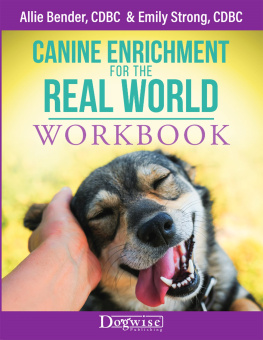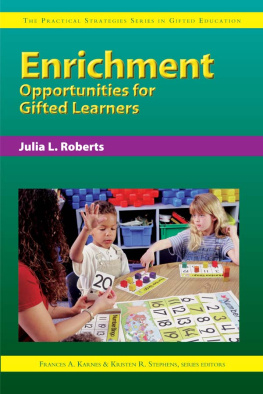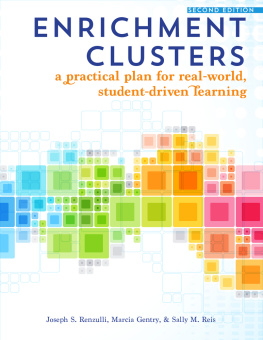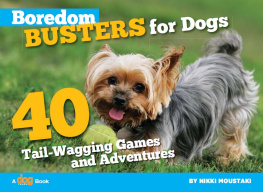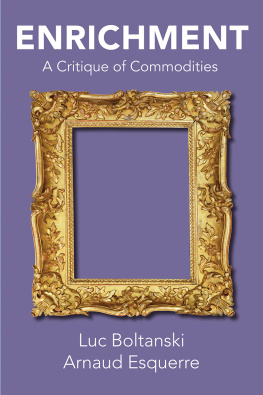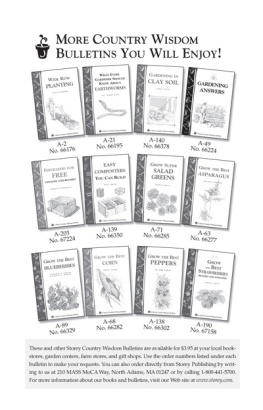
When we wrote our book, Canine Enrichment for the Real World, we had originally wanted the subtitle to be: What It Is, Why It Matters, and How to Incorporate It into Your Daily Life. We ultimately decided that it was too long for a subtitle, so we went in a different direction, but that original subtitle pretty much summed up our goal for the book: We wanted people to understand what enrichment really is, how it applies to them and their relationship with the animals they live and work with, and how to do it in an effective and sustainable way.
Even though we tried to provide as much applicability as possible, including our enrichment chart and a robust Resources section, we ultimately realized that creating a companion workbook was the best way to help people take the concepts we shared in the book and apply them to their own lives.
In the time since we wrote the book, we have had the opportunity to work with hundreds of clients and professionals around the world, focusing on using an enrichment framework to assess and address undesirable behaviors. Weve gotten some great feedback, and these are some of the most common fears and concerns that people have shared with us:
From professionals:
- My client isnt interested in enrichment; they just want fast results.
- This seems too complicated for the average client to do.
- Im not clear on how to apply this enrichment stuff in a training plan.
From pet parents:
- I feel guilty now that I know that some of my dogs needs arent being met.
- If I let them do this behavior, arent I reinforcing it? Isnt that a bad thing?
- I have a busy life and Im not sure how Ill have time to do more for my dog. They already feel like so much work!
We will address all these fears and concerns in this workbook, well provide some worksheets that will help you to clarify and simplify your process, and well also provide a clear plan of action for implementing a sustainable and effective enrichment protocol for yourself or your clients.
So lets get started!
As dog professionals, our skills are constantly growing and evolving. Our knowledge of canine behavior and training techniques has evolved significantly in recent years. It is not surprising, therefore, that by the time Canine Enrichment for the Real World was published, we had already started a list of things we wanted to change or amend if we ever got the chance for a second edition. One of the biggest ways weve evolved since the book came out is how we implement the strategies we outlined in it. Weve had the pleasure of discussing enrichment with so many people (thank you, all!) via webinars, courses, podcasts, interviews, Facebook groups, emails, and working with clients and students. The theme that we found folks coming back to is, How can I implement this?
Learning how to answer that question was an entire journey for us in and of itself. Sometimes youve been doing something for so long that it becomes second nature; you cant really explain how it is that you do what you do. You just do it.
Shortly after Canine Enrichment for the Real World (referred to hereafter as CEftRW) came out, we found ourselves having to analyze our strategies and compile them in a way that other people could replicate it. Especially since, while we originally wrote CEftRW for professionals, weve found many pet parents coming to us having read our book (shout out to all the awesome pet parents out there!). Whatever strategies we came up with, we knew they had to be replicable by people with a wide array of skill levels. We continued honing the process until we had a protocol and resources that other people were finding helpful.
And once the process and resources were in place, a workbook just made sense. Around the same time, our company Pet Harmony, an animal behavior and training organization that provides behavior consulting services for dogs, cats, and other species, began teaching these processes to behavioral professionals around the world. Thus, the Pet Harmony Enrichment Framework was born.
This workbook is to show you the process that we go through when creating an enrichment plan and provide you with resources to help you develop and/or grow those skills.
How this workbook is organized
This workbook is divided into four parts:
- Basic enrichment overview
- Explanation and examples of the enrichment process
- Case study
- Blank worksheets for you to use
The basic enrichment overview is to provide you with a quick review of what we discussed in the book, with one new section about behavioral diversity.
The explanation and examples of the enrichment process is the how-to for implementation. This is the nuts and bolts of how we do what we do.
The case study looks at one of Allies clients. In it, she goes through the entire enrichment process so you can see it all laid out in detail. This case study is primarily for professionals, since it demonstrates how we use the enrichment framework to address maladaptive behaviors. But of course, pet parents, youre welcome to read it too, if youre interested!
Finally, the fourth section contains blank worksheets that we showcase throughout the implementation section. You can use them for your own dog or with a clients dog, if you so desire. For PDF versions of these worksheets, you can go to petharmonytraining.com/enrichmentworksheets.
More what wed call guidelines than actual rules
Just because we do something a certain way does not mean its the only way to do it. Consider this workbook more as a guideline, rather than the One True Way. Furthermore, while weve developed many resources to help folks go through the process, we rarely use them ourselves. We typically go through the process outlined in this workbook in our heads or will shorten it when possible. At the end of the day, you have agency to go through this process in whatever way is effective for you. We strongly recommend starting with the Are needs being met? worksheet, since that is by far the tool we give most often to clients.
That said, there are times when we will use these resources, and its usually when were either working with someone who wants to see the entire process or when were stuck. There are times in a case where some things are just not quite adding up, and when that happens it can be incredibly helpful to go back to the basics to see what were missing and work through the case methodically and meticulously.
If it aint that broke, it doesnt need much fixing
Since we do have more pet parents here than we expected (hello!), we think its necessary to say that if your dog doesnt have any behavior issues that are causing disharmony in your home, your process will likely be much simpler than what weve outlined in this workbook. We as behavior consultants routinely apply this protocol to pets with serious maladaptive behaviors and wanted to showcase how enrichment isnt just for making twerpy adolescents less annoying or for keeping adult dogs entertained; it can (and should!) be used for serious behavior cases. However, we recognize that that does not apply to everyone who will be reading this, and not everyone will need to go as in depth for their individual dog. Again: We strongly recommend that you just start with the Are needs being met? checklist, since that may be all you need to identify and create goals for yourself.
If it is pretty broke, professional help is necessary
That said, if you are a pet parent who does have a dog with behavior problems, going through this workbook unguided is not recommended. A qualified behavior professional will be able to give you invaluable information and help when it comes to safely and effectively implementing the enrichment strategies weve laid out here. We routinely have to alter exercises for pets with maladaptive behaviors in order to keep them and others safe and to make those exercises effective. We do not expect the average pet parent to be able to do that.
Next page
